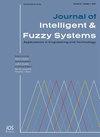Extended TODIM technique based on TOPSIS for county preschool education resource allocation level evaluation under interval-valued Pythagorean fuzzy sets
IF 1
4区 计算机科学
Q3 COMPUTER SCIENCE, ARTIFICIAL INTELLIGENCE
引用次数: 0
Abstract
Optimizing the allocation of preschool education resources and improving the efficiency of resource allocation is of great strategic significance for the universal and inclusive development of preschool education and the realization of “education for young children". In recent years, the shift from high-speed development to high-quality development of the social economy has significantly improved the balanced development level of China’s preschool education industry. However, preschool education remains the weakest link in China’s education system and the most unfavorable aspect of educational resource allocation. Problems such as shortage of preschool education resources, insufficient investment, uneven regional development, imbalanced supply and demand structure, low resource allocation efficiency, and “difficult to enter, expensive to enter” are still prominent. How to optimize resource allocation and improve resource utilization efficiency in the limited resources of preschool education is the key to achieving balanced, fair, coordinated, and high-quality development of preschool education. The county preschool education resource allocation level evaluation is MAGDM problems. Recently, the TODIM and TOPSIS technique was employed to cope with MAGDM issues. The interval-valued Pythagorean fuzzy sets (IVPFSs) are employed as a tool for characterizing uncertain information during the county preschool education resource allocation level evaluation. In this manuscript, the interval-valued Pythagorean fuzzy TODIM-TOPSIS (IVPF-TODIM-TOPSIS) technique is built to solve the MAGDM under IVPFSs. Finally, a numerical case study for county preschool education resource allocation level evaluation is given to validate the proposed technique. The main contribution of this paper is managed: (1) the TODIM and TOPSIS technique was extended to IVPFSs; (2) Information Entropy is employed to manage the weight values under IVPFSs. (3) the IVPF-TODIM-TOPSIS technique is founded to manage the MAGDM under IVPFSs; (4) Algorithm analysis for county preschool education resource allocation level evaluation and comparison analysis are constructed based on one numerical example to verify the feasibility and effectiveness of the IVPF-TODIM-TOPSIS technique.区间毕达哥拉斯模糊集下县域学前教育资源配置水平评价的TOPSIS扩展TODIM方法
优化学前教育资源配置,提高资源配置效率,对于促进学前教育普惠发展,实现“育婴幼”具有重要的战略意义。近年来,社会经济由高速发展转向高质量发展,显著提高了中国学前教育产业的均衡发展水平。然而,学前教育仍然是中国教育体系中最薄弱的环节,也是教育资源配置中最不利的环节。学前教育资源短缺、投入不足、区域发展不平衡、供需结构不平衡、资源配置效率低、“入难、入贵”等问题依然突出。如何在有限的学前教育资源中优化资源配置,提高资源利用效率,是实现学前教育均衡、公平、协调、高质量发展的关键。县域学前教育资源配置水平评价是MAGDM问题。近年来,采用TODIM和TOPSIS技术来处理MAGDM问题。在县级学前教育资源配置水平评价中,采用区间值毕达哥拉斯模糊集(ivpss)作为表征不确定性信息的工具。本文建立了区间值毕达哥拉斯模糊TODIM-TOPSIS (IVPF-TODIM-TOPSIS)技术来解决ivpfs下的MAGDM问题。最后,以县级学前教育资源配置水平评价为例,对该方法进行了验证。本文的主要贡献如下:(1)将TODIM和TOPSIS技术扩展到ivpfs;(2)利用信息熵对ivpfs下的权重值进行管理。(3)建立了IVPF-TODIM-TOPSIS技术,对ivpfs下的MAGDM进行管理;(4)构建县域学前教育资源配置水平评价的算法分析和对比分析,通过一个数值算例验证了IVPF-TODIM-TOPSIS技术的可行性和有效性。
本文章由计算机程序翻译,如有差异,请以英文原文为准。
求助全文
约1分钟内获得全文
求助全文
来源期刊

Journal of Intelligent & Fuzzy Systems
工程技术-计算机:人工智能
CiteScore
3.40
自引率
10.00%
发文量
965
审稿时长
5.1 months
期刊介绍:
The purpose of the Journal of Intelligent & Fuzzy Systems: Applications in Engineering and Technology is to foster advancements of knowledge and help disseminate results concerning recent applications and case studies in the areas of fuzzy logic, intelligent systems, and web-based applications among working professionals and professionals in education and research, covering a broad cross-section of technical disciplines.
 求助内容:
求助内容: 应助结果提醒方式:
应助结果提醒方式:


